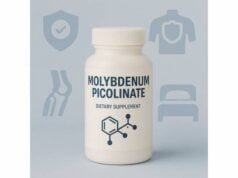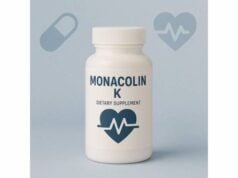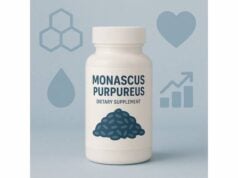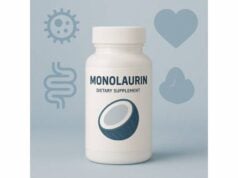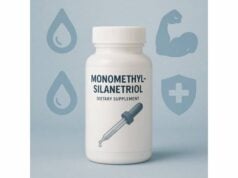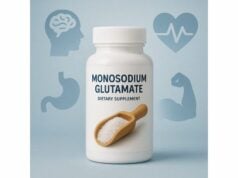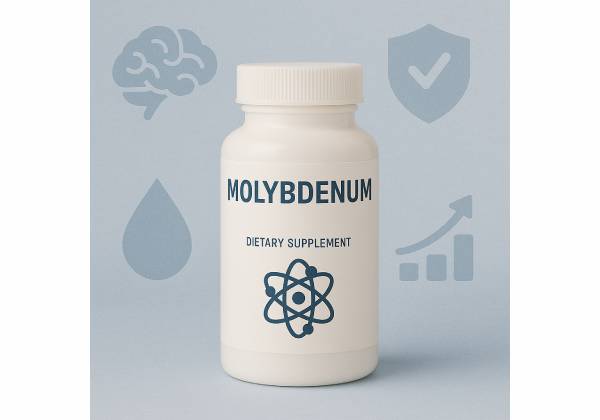
Molybdenum is a trace mineral your body needs in tiny amounts but relies on every day. It sits quietly inside four human enzymes—sulfite oxidase, xanthine oxidase, aldehyde oxidase, and mARC—helping you process sulfur-containing amino acids, break down purines, and metabolize certain medicines and toxins. Because these jobs are constant, most people meet their needs from common foods like legumes, whole grains, nuts, and milk without thinking about it. Still, questions come up: Which foods are richest? Do supplements help? How much is safe, especially if you follow a special diet or have kidney issues? And why do U.S. and European “upper limits” differ so much?
This guide answers those questions with practical detail. You will learn how molybdenum behaves in the body, the benefits you can reasonably expect, the best food sources and meal ideas, how to dose supplements (if you need them), risks to watch for, and where the scientific evidence stands today. By the end, you’ll know when simple food choices are enough and when a supplement makes sense—plus exactly how to use it safely.
Quick Overview
- Supports four enzymes that process sulfur amino acids and purines; helps clear sulfites and certain drugs.
- Typical supplement range: 50–500 mcg/day; adult RDA is 45 mcg/day; do not exceed your region’s UL (U.S. 2,000 mcg; EU 600 mcg).
- Main foods: beans, lentils, peas, whole grains, nuts, milk; content varies with soil.
- Safety note: long-term high intake may impair copper status and raise uric acid in susceptible people.
- Avoid unsupervised use if you have significant kidney disease, Wilson disease therapy with tetrathiomolybdate, or a history of gout.
Table of Contents
- What is molybdenum?
- What it does and benefits
- How to get enough from food
- How to supplement and dosage
- Side effects, risks, who should avoid
- Evidence summary and FAQ
What is molybdenum?
Molybdenum is an essential trace element found in soil and water and distributed widely in foods. In humans, its biologic activity depends on the “molybdenum cofactor” (often shortened to Moco), a small pterin-based molecule that holds the molybdenum atom and inserts it into specific enzymes. Without Moco, those enzymes don’t work; with it, they catalyze redox reactions that keep sulfite levels safe, convert dietary and cellular purines to uric acid, and help biotransform certain xenobiotics (external chemicals) and medications.
Four enzymes require molybdenum in humans:
- Sulfite oxidase (SO): Converts sulfite (a reactive metabolite of cysteine and methionine) to sulfate, preventing sulfite buildup.
- Xanthine oxidase (XO): Final steps in purine breakdown, producing uric acid.
- Aldehyde oxidase (AO): Oxidizes various aldehydes and heterocyclic compounds; contributes to drug metabolism.
- mARC (mitochondrial amidoxime reducing component): Reduces N-hydroxylated compounds; an emerging player in drug and toxin handling.
Deficiency from diet is exceptionally rare because typical eating patterns deliver more than the small daily requirement. The most striking evidence for importance comes from two uncommon situations:
- Genetic Moco deficiency (an inborn error of metabolism): a severe neonatal disorder caused by failure to synthesize Moco; all four enzymes malfunction.
- Total parenteral nutrition (TPN) without molybdenum: a historical cause of reversible deficiency when IV nutrition omitted the mineral.
In foods, molybdenum is usually present as molybdate (MoO₄²⁻). Absorption is generally high (around three-quarters or more for mixed diets). The kidneys regulate status tightly, increasing urinary excretion when intake rises. Tissue stores are modest; liver and kidney contain the highest concentrations.
Supplement forms include sodium molybdate, molybdenum glycinate, and “amino acid chelate.” At routine doses, no form has proven consistently superior in people. Most multivitamins supply 45–100 mcg, roughly matching the adult Recommended Dietary Allowance (RDA). Specialty “trace mineral” products may offer 150–500 mcg for short-term use under guidance.
Key takeaways so far: molybdenum is essential, needs are small, food usually suffices, and the body eliminates excess efficiently—up to a point. Problems arise mainly at very high, long-term intakes or in people with unique medical circumstances.
What it does and benefits
1) Protects against sulfite buildup. When you digest protein (especially sulfur-rich amino acids like cysteine), you generate sulfite. Sulfite is reactive; in excess, it can damage tissues and provoke neurologic symptoms. Sulfite oxidase converts it to sulfate, a harmless, excretable ion. This is why Moco-dependent enzymes are critical in rare genetic conditions and why missing molybdenum from long-term TPN leads to irritability, tachycardia, rapid breathing, and neurologic changes that reverse when molybdenum is restored.
2) Supports purine metabolism. Xanthine oxidase uses Moco to convert hypoxanthine to xanthine and then to uric acid. Uric acid is an antioxidant in the bloodstream but can form crystals at high levels (gout). In healthy people, normal dietary molybdenum doesn’t “boost” xanthine oxidase in a clinically meaningful way; however, extreme environmental exposures (milligram doses) have been associated with gout-like symptoms in certain regions. For those already managing gout or hyperuricemia, high-dose supplements offer no advantage and may be counterproductive.
3) Helps metabolize medicines and environmental compounds. Aldehyde oxidase and mARC participate in the Phase I biotransformation of a variety of molecules, including some anti-cancer agents, antivirals, and experimental prodrugs. Although the contribution can vary by drug, these enzymes illustrate why a trace nutrient can still matter for the way your body handles treatments and toxins.
4) Potential antioxidant and detox support—within reason. You’ll see claims that molybdenum “detoxifies sulfites” or “supports mitochondria.” Those statements trace back to known enzyme chemistry, but they do not imply that extra molybdenum beyond the RDA enhances detox in healthy adults. The body keeps enzyme activity near its set point; when molybdenum intake rises, the kidneys excrete more. Practically, the best “benefit” comes from avoiding deficiency and staying within advised intake ranges.
5) Oral health and sulfite sensitivity. People who report headaches or wheezing from sulfite-preserved foods sometimes ask if molybdenum helps. Mechanistically, sulfite oxidase needs Moco, so the idea sounds plausible. In reality, evidence is limited. If you have sulfite sensitivity (often tied to asthma), work with a clinician: managing triggers and overall airway inflammation matters more than self-supplementing molybdenum.
Who is most likely to benefit from focused attention to molybdenum?
- Individuals on highly restricted diets that eliminate legumes and whole grains for long periods.
- People receiving long-term specialized nutrition (enteral or parenteral) where trace mineral formulations must be set correctly.
- Those with conditions affecting renal excretion, since the kidneys regulate molybdenum tightly (see Safety).
Bottom line: molybdenum’s “benefits” are largely foundational—quietly enabling enzymes to do their jobs so you can metabolize sulfur amino acids, purines, and certain chemicals. Routine dietary adequacy achieves that goal for most adults; higher dosing rarely adds extra benefit and can introduce risk.
How to get enough from food
Because molybdenum content varies with soil levels and pH, the exact micrograms per serving can swing by region. Even so, one consistent pattern emerges worldwide: legumes and whole grains are dependable sources, with nuts and milk contributing meaningfully.
Everyday food sources to rely on
- Beans, peas, and lentils: Chickpeas, black beans, pinto beans, split peas, lentils; a single cup of cooked legumes commonly provides a substantial share of the 45 mcg adult RDA.
- Whole grains: Whole-wheat bread, oats, barley, buckwheat. Choosing intact or minimally refined grains preserves minerals.
- Tree nuts and seeds: Peanuts, almonds, pecans, sunflower seeds—good for snacks or toppings.
- Dairy: Milk and cheese offer smaller amounts per serving but can add up over a day.
- Organ meats: Beef liver contains notable molybdenum, though intake varies widely.
Bioavailability and cooking
Human absorption of dietary molybdenum is generally high—often around three-quarters of intake for mixed diets and even higher at low intakes. Plant foods may show slightly lower absorption than added (fortified) molybdate salts, but the difference seldom matters when total intake meets the small daily need. Typical home cooking methods (boiling, baking, sautéing) do not greatly reduce molybdenum content. Rinsing and soaking beans can lower some minerals; for molybdenum, the impact is modest compared with sodium or potassium.
Simple meal ideas to hit the RDA without tracking
- Oatmeal at breakfast + lentil soup or bean chili at lunch + a handful of nuts or a glass of milk at some point in the day.
- Whole-grain pita with hummus; quinoa-black-bean bowl; peanut butter on whole-grain toast.
- Vegetarian or omnivorous diets can both work; what matters is pattern—include legumes and whole grains several times per week.
Special diets and how to adapt
- Gluten-free: Lean on oats (certified GF if needed), buckwheat, quinoa, and legumes.
- Low-FODMAP: Some legumes are restricted, but canned lentils and firm tofu are often tolerated; nuts and hard cheeses can provide smaller amounts.
- Very low-carb: If legumes and grains are minimized, include nuts, seeds, low-lactose dairy, and consider a multivitamin providing ~45–100 mcg molybdenum.
Water as a minor source
Drinking water typically contains very little molybdenum; a small percentage of samples can be higher depending on geology. Water alone rarely meets daily needs or pushes you toward excess.
Do you need to measure?
For most people, no. There’s no validated clinical biomarker of molybdenum status for routine use, and deficiency is almost unheard of in free-living adults. If your overall diet regularly includes beans, whole grains, or nuts, you are almost certainly meeting the RDA.
How to supplement and dosage
Who might consider a supplement?
- You avoid legumes, whole grains, and nuts long-term because of a medical diet and cannot reintroduce them soon.
- You are on a medically supervised formula diet or specialized feeding where mineral content is not guaranteed.
- You take a multivitamin and want to ensure it contains molybdenum near the RDA.
Dosage guide (adults 19+ years, including older adults)
- RDA: 45 mcg/day.
- Common supplement range: 50–150 mcg/day (typical multivitamin/mineral).
- Short-term corrective use: 150–300 mcg/day for a defined period if diet is extremely limited—preferably under clinician guidance.
- Do not exceed your region’s Upper Intake Level (UL) unless medically supervised: U.S. UL = 2,000 mcg/day (2 mg); EU UL = 600 mcg/day for adults. If products list percentages of Daily Value (DV), note that the U.S. DV for molybdenum is 45 mcg (100% DV).
Forms and what to choose
- Sodium molybdate and molybdenum glycinate/amino acid chelate are most common. Human head-to-head trials do not show a clear bioavailability winner at typical doses. Prioritize product quality (third-party testing, accurate labeling) over form hype.
- For people sensitive to GI upset, starting with 50–100 mcg once daily with a meal is sensible.
When to take it
Timing is flexible. Taking with food may reduce any mild stomach discomfort and mirrors how the mineral appears in a normal diet. Spacing from high-dose copper supplements is prudent (see Safety) to avoid theoretical competition via thiomolybdate formation.
How long until you notice anything?
Most users feel no perceptible “boost” because molybdenum’s role is enzymatic housekeeping. The goal is adequacy, not stimulation. In rare deficiency from TPN omission, symptom reversal occurs within days to weeks once molybdenum is restored—this is a medical scenario.
Stacking with other nutrients
- A standard multivitamin/mineral typically covers molybdenum along with zinc, iodine, selenium, and copper.
- If you take additional copper or zinc for medical reasons, keep molybdenum at the RDA unless advised otherwise, since high molybdenum can reduce copper status over time.
Practical supplement checklist
- Confirm you truly need it (diet pattern, medical guidance).
- Choose a reputable brand with 50–150 mcg per serving.
- Take with a meal; avoid combining with high-dose copper.
- Reassess after 8–12 weeks. If diet improves, discontinue.
Side effects, risks, who should avoid
Typical tolerability. At RDA-level intakes (45–100 mcg/day), molybdenum is well tolerated. Because the kidneys increase excretion as intake rises, serum levels remain low and stable in healthy adults.
Potential problems at high or prolonged intakes
- Copper depletion: Sulfur and molybdenum can form thiomolybdates that bind copper strongly, reducing copper availability. In veterinary medicine, this mechanism produces copper deficiency in ruminants; humans are less sensitive, but long-term high molybdenum could lower copper stores. Watch for unexplained anemia, neutropenia, or hair depigmentation if taking high doses for months.
- Uric acid/gout: Extreme environmental intakes (milligram ranges) have been associated with gout-like symptoms. If you have gout or hyperuricemia, avoid high-dose molybdenum and focus on dietary adequacy only.
- Kidney disease: The kidneys are the main route of excretion. In chronic kidney disease (CKD), molybdenum may accumulate. Use only clinician-guided dosing, if any.
- Pregnancy and lactation: Needs are slightly higher (RDA 50 mcg/day), but safety margins are narrower. Stay near the RDA and avoid high-dose supplements unless prescribed.
- Children: Intake guidance is age-specific and much lower than adults. Do not give adult molybdenum supplements to children.
Medication and condition interactions
- Tetrathiomolybdate (a prescription copper chelator used in Wilson disease and in some research settings) already exploits the copper-binding effect. Do not combine with supplemental molybdenum unless your specialist instructs otherwise.
- Allopurinol and other gout medicines act on uric acid pathways. Routine molybdenum at RDA levels is unlikely to interfere, but high doses serve no therapeutic purpose and could complicate management.
- Parenteral or elemental diets: Trace elements, including molybdenum, should be balanced precisely. Dose adjustments belong in medical hands.
Allergies and sensitivities
Metal allergies to molybdenum are rare. If you experience rash, itching, or breathing issues after starting a supplement, discontinue and seek care; evaluate other ingredients (fillers, dyes) first.
How to respond to side effects
- Mild GI upset: Take with food, lower the dose, or switch brand/form.
- Signs suggesting copper deficiency (fatigue, frequent infections, pale skin): stop high-dose molybdenum, seek evaluation, and review overall mineral intake.
Red-flag scenarios for avoiding self-supplementation
- Stage 3–5 CKD or on dialysis.
- Using tetrathiomolybdate or other copper-reducing therapies.
- History of gout with frequent flares.
- Infants and children, unless specifically instructed by a clinician.
Evidence summary and FAQ
How strong is the human evidence?
For basic physiology (enzymes, absorption, excretion), evidence is strong and longstanding. For clinical outcomes in healthy adults (energy, detox, performance), evidence does not show added benefit from supplementation beyond meeting the RDA. The most decisive human data come from balance studies that established minimum requirements and from clinical observations in Moco deficiency and TPN-omission cases.
Why do safe upper limits differ between the U.S. and Europe?
Different expert panels weigh uncertainty and animal data differently. The U.S. Tolerable Upper Intake Level (UL) for adults is 2,000 mcg/day (2 mg). European authorities historically set a lower adult UL around 600 mcg/day, prioritizing precaution based on reproductive toxicity in animals and conservative intake scenarios. If you live in the EU or buy EU-labeled products, follow the 600 mcg UL; if you live in the U.S., the 2,000 mcg UL applies. In both regions, there is no rationale for long-term dosing anywhere near the UL for healthy people.
What about molybdenum for sulfite sensitivity or wine reactions?
Molybdenum’s role in sulfite oxidase makes this appealing, but practical benefits from extra supplementation are unproven. Managing total sulfite exposure and underlying asthma control tends to matter more. If you experiment, keep to RDA-level doses and discuss with a clinician.
Is there a test for molybdenum status?
No routine clinical test correlates with functional status. Blood and urine levels mostly reflect recent intake and renal handling, not tissue sufficiency. Clinicians rely on diet history and, in specialized settings, on total trace-element formulations.
Can molybdenum help with “detox”?
Your liver and kidneys already use Moco-dependent enzymes to process certain compounds. That doesn’t mean more molybdenum equals more detox. Over-supplementation risks copper imbalance without delivering measurable benefit. Prioritize food-based adequacy and overall lifestyle (sleep, hydration, fiber, alcohol moderation).
Rapid practical summary
- Eat legumes or whole grains most days; add nuts and milk as desired.
- If your diet excludes these long-term, use a multivitamin with 45–100 mcg molybdenum.
- Avoid high doses if you have CKD or gout, or if you are on copper-targeted therapy.
- Respect your region’s UL and aim far below it.
References
- Molybdenum – Health Professional Fact Sheet 2021 (Guideline)
- Overview on Tolerable Upper Intake Levels as derived by the Scientific Committee on Food (SCF) and the EFSA Panel on Dietetic Products, Nutrition and Allergies (NDA) 2025 (Guideline)
- Molybdenum – a scoping review for Nordic Nutrition Recommendations 2023 – PMC 2023 (Systematic Review)
- Molybdenum cofactor deficiency: A natural history – PMC 2022 (Review/Rare Disease)
Disclaimer
This article is for general information and education. It is not a substitute for personalized medical advice, diagnosis, or treatment. Always speak with a qualified healthcare professional about your specific health situation, especially before starting or changing any supplement regimen, if you are pregnant or breastfeeding, have kidney disease or gout, or take prescription medicines.
If you found this guide helpful, please consider sharing it on Facebook, X (formerly Twitter), or your preferred platform, and follow us for future evidence-based articles. Your support helps us continue creating high-quality, reader-first content.

